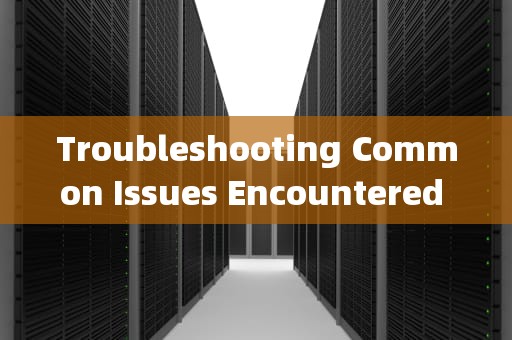In the digital age, servers serve as the backbone of both businesses and individuals alike, facilitating seamless data storage, processing, and retrieval. However, like any sophisticated machinery, they are not immune to encountering problems that can disrupt their smooth operation. This article delves into some of the most prevalent issues faced by servers, equipping you with the knowledge to identify and troubleshoot these common predicaments.

1. Hardware Malfunctions
Hardware failures are among the most straightforward yet critical issues a server can face. These malfunctions often stem from physical component wear and tear, overheating, or power surges. Symptoms may include unexpected shutdowns, slow performance, or error messages indicating hardware issues. To mitigate such problems, regular maintenance checks, including temperature monitoring and timely replacement of faulty parts, are crucial. Investing in uninterruptible power supplies (UPS) can also protect against power-related hardware damage.
2. Software Bugs and Corruption
Software-related problems can manifest in various ways, from application crashes to system freezes or security breaches due to outdated software. Regular updates and patches are essential in safeguarding against known vulnerabilities and bugs. Implementing a robust backup strategy ensures that even in cases of severe corruption, data integrity can be restored without significant loss. Additionally, conducting periodic security audits helps identify potential weak points in the system's defenses.
3. Network Connectivity Issues
A server's functionality heavily relies on stable network connections. Connectivity problems can stem from faulty network equipment, misconfigurations, or external factors like ISP issues. Troubleshooting steps typically involve checking physical connections, restarting networking devices, and verifying configuration settings. Employing network monitoring tools can proactively alert administrators to potential connectivity issues before they escalate into larger problems.
4. Overloaded Server Resources
When a server exceeds its capacity due to high traffic or resource-intensive applications, it can lead to sluggishness or even crashes. Monitoring resource usage through tools like Task Manager or top commands allows for early detection of overutilization. Scaling resources up by adding more RAM, upgrading processors, or distributing the workload across multiple servers via load balancing can alleviate this issue. Regularly analyzing and optimizing server workloads ensures efficient resource allocation.
5. Security Breaches and Cyber Attacks
Perhaps one of the most daunting challenges is protecting against security threats such as hacking attempts, malware infections, or DDoS attacks. Implementing firewalls, intrusion detection systems, and regularly updated antivirus software forms the first line of defense. Educating users about safe online practices and conducting regular security drills can further enhance an organization's resilience against cyber threats. In case of a breach, having a well-rehearsed incident response plan is vital for minimizing damage and quickly restoring normal operations.
6. Misconfigurations and Human Error
Human error remains a significant source of problems, ranging from incorrect settings during setup to accidental deletion of critical files. Establishing clear documentation processes, providing comprehensive training for administrators, and implementing version control systems for configuration changes can significantly reduce the likelihood of such errors. Regularly reviewing and testing backup and recovery procedures ensures that accidental data loss or system misconfigurations can be promptly addressed.
7. Environmental Factors
Environmental conditions, including temperature extremes, humidity, and dust accumulation, can adversely affect server performance and longevity. Maintaining an optimal environment with controlled temperatures, adequate ventilation, and cleanliness is vital. Using environmental monitoring systems can help track these factors in real-time, allowing for adjustments before they cause hardware damage or system instability.
In conclusion, while servers are integral to our digital infrastructure, they are susceptible to a range of issues that can impede their performance and reliability. By understanding these common problems and adopting proactive measures such as regular maintenance, strategic planning, and continuous learning, administrators can significantly enhance their servers' resilience and ensure uninterrupted service. Remember, a well-maintained server is not just about technology; it's about fostering trust and enabling seamless digital experiences for users worldwide.
随着互联网的普及和信息技术的飞速发展台湾vps云服务器邮件,电子邮件已经成为企业和个人日常沟通的重要工具。然而,传统的邮件服务在安全性、稳定性和可扩展性方面存在一定的局限性。为台湾vps云服务器邮件了满足用户对高效、安全、稳定的邮件服务的需求,台湾VPS云服务器邮件服务应运而生。本文将对台湾VPS云服务器邮件服务进行详细介绍,分析其优势和应用案例,并为用户提供如何选择合适的台湾VPS云服务器邮件服务的参考建议。

工作时间:8:00-18:00
电子邮件
1968656499@qq.com
扫码二维码
获取最新动态
